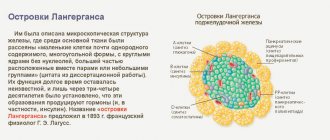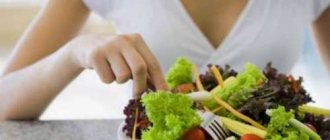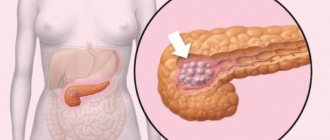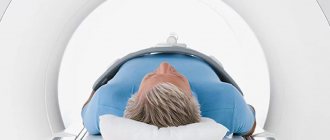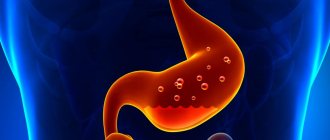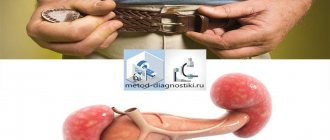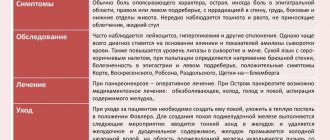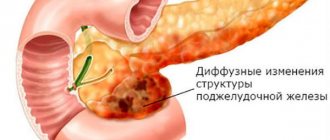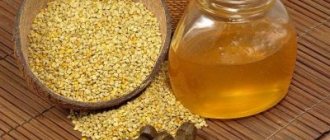To restore the pancreas and normalize its function, it is necessary to find out and eliminate the cause of inflammation. Acute pancreatitis most often develops due to alcohol abuse, diseases of neighboring organs (gallbladder and duodenum), since the outflow of secretions is disrupted and enzymes are activated in the pancreas.
Chronic pancreatitis often develops against the background of cholelithiasis, peptic ulcer, duodenitis, and atherosclerosis. The functioning of the organ changes due to pancreatic cancer and hormonally active tumors, cysts and stones. To improve the functioning of the organ, you need to undergo an examination (ultrasound, x-ray, CT) and eliminate the main cause of the pathology.
Your doctor will tell you how to restore the functioning of the pancreas after diagnosis. A mandatory component of therapy is nutritional therapy, which will help reduce the functional load on the organ and give it time to recover.
Treatment of the pancreas cannot be done without medications. Complex therapy may include the use of folk remedies. Whether it is possible to restore lost functions depends on the pathology that provoked the inflammation.
Role of the pancreas
The pancreas synthesizes hormones and enzymes necessary for digestion. During the day, the organ secretes about 1.5–2 liters of pancreatic juice, which is 98% water, and the rest is “proenzymes” that trigger a cascade of reactions in the duodenum, due to which carbohydrates, proteins and fats are broken down in the body. The secretion of the pancreas also contains bicarbonates, which neutralize the acidity of hummus.
The endocrine function of the pancreas is to secrete hormones that regulate carbohydrate metabolism. Thus, alpha cells synthesize glucagon, and beta cells produce insulin. Glucagon enhances the breakdown of glycogen stored in the liver in order to maintain blood glucose levels at a constant level. The main function of insulin is to reduce the concentration of glucose in the blood.
Deterioration of pancreatic function affects the functioning of the entire body. At high concentrations, glucagon has a pronounced antispasmodic effect; the smooth muscles of the internal organs, especially the intestines, relax, which leads to its atony. When insulin secretion is impaired, diabetes mellitus develops.
A lack of proteolytic enzymes leads to a deterioration in the digestive process. With inflammation in the pancreas, a person experiences severe pain in the epigastric region, which can radiate to the left hypochondrium, left shoulder blade, back, or have a girdling character. Digestive difficulties lead to dyspeptic disorders (vomiting, nausea, diarrhea).
Recovery of the pancreas after surgery
The prognosis for a patient after pancreatic surgery depends on the extent of the intervention and the condition of the organ before it. There are many measures aimed at the rehabilitation of patients after surgery. Among them, the most commonly used are:
- automassage,
- gymnastics,
- physiotherapy,
- therapeutic nutrition,
- herbal medicine.
Diet is essential after surgery to reduce the risk of postoperative diabetes. The essence of the diet is the exclusion of foods that increase the formation of acid in the stomach and thereby cause the active work of pancreatic enzymes.
The patient should eat steamed or boiled food, eat food in crushed or pureed form. Frying, smoking, and grilling are completely excluded. Butter and vegetable oil must be added to the finished dish without heat treatment. Fats that have been heated will harm the pancreas and are therefore unacceptable.
Important conditions of the diet are: regular meals in small portions, avoidance of fatty, spicy and fried foods, and complete exclusion of alcohol. Initially, the patient must adhere to treatment table No. 5P; after 1–1.5 months, the diet can be slightly expanded. During this period, the patient is recommended to rest more, especially after eating. After an exacerbation of the disease, it is recommended to follow a diet for at least 8 months, and then switch to a normal diet, without abusing previously prohibited foods.
Diet
In acute pancreatitis, it is recommended to refrain from eating for several days. When food enters the stomach, hormones begin to be synthesized, which stimulate the release of pancreatic enzymes, and due to the inflammatory process, this significantly worsens the condition of the organ. Therapeutic fasting will help reduce the severity of pain and dyspeptic syndrome.
After 48–72 hours, you can start eating, but you must adhere to a therapeutic diet that will not overload the digestive system. For pancreatitis, diet No. 5 is prescribed. It provides chemical, mechanical and thermal sparing of the gastrointestinal tract, reduces pain, reduces the secretory function of the pancreas, and restores metabolism.
During the period of exacerbation, the No5P diet is indicated (option 1); as the patient’s condition improves, the patient is transferred to the No5P diet (option 2)
The No5P diet is low-calorie, contains the physiological norm of protein, but sharply limits the consumption of fats and quickly digestible carbohydrates. Dishes that stimulate the secretion of pancreatic juice and foods that contain large amounts of fiber are completely excluded. All dishes must be liquid or semi-liquid.
Allows consumption of only boiled or steamed food. The diet may include crackers, cereal soups in vegetable broth, cream soup in weak meat broth, steamed cutlets from lean meat, soft-boiled chicken eggs, mashed porridge prepared without milk, compotes, weak tea.
This diet must be followed for 5–10 days. It will help support the pancreas and speed up the recovery of the organ.
After the inflammation subsides, the patient is transferred to the second version of the No5P diet. It is necessary to increase the amount of protein in the diet to 120 grams, and limit fat to 60–70 grams. It is still prohibited to include in the menu dishes that contain extractive substances that stimulate the secretion of pancreatic juice.
Nutrition for pancreatic disease
The patient can eat:
- vegetable soups (cabbage cannot be added) with the addition of cereals and noodles;
- pureed meat dishes;
- fish dishes (can be served in pieces or chopped);
- dairy and fermented milk products;
- vegetables (potatoes, carrots, beets, pumpkin, zucchini);
- compotes, jelly, jelly.
This diet should be followed for a long time, from 3 months to a year. Since thermal sparing of the gastrointestinal tract is also required, you should not eat too hot or cold food. Dietary food is selected depending on the disease, its stage and severity, therefore the attending physician will provide an exact list of permitted and prohibited foods.
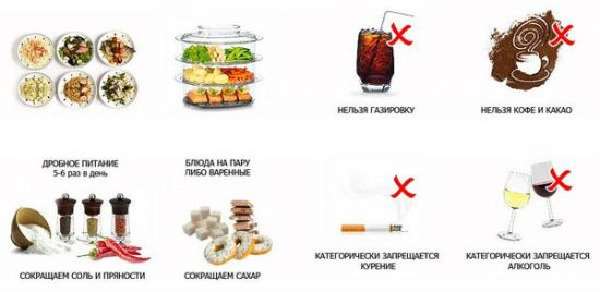
It is impossible to improve the functioning of the pancreas without following dietary recommendations
The condition of the organ, and the entire digestive system, is negatively affected by alcohol consumption, smoking, irregular food intake, love of fatty, spicy foods and fast food. It is better to avoid these products completely.
Surgery

In some cases, malfunctions of the pancreas require surgery. Of course, surgical intervention is performed only for absolute indications, when there is no hope for conservative treatment.
Indications are a chronic form of pancreatitis with frequent relapses, an acute form of destructive pancreatitis, pancreatic necrosis, pseudocysts, organ injury, tumor neoplasms of a malignant nature.
The gland is a “capricious” organ; it is extremely difficult to predict the outcome of the operation, since it is unknown how it will react to mechanical intervention. According to statistics, this manipulation leads to various complications in most clinical pictures.
Types of operations:
- Necrectomy (during the procedure, necrotic tissue is removed).
- Resection involves removing some part of an organ.
- Complete pancreatectomy.
- Drainage of pseudocysts and abscesses.
The prognosis after intervention is determined by numerous criteria. Patients often develop intra-abdominal bleeding, thrombosis, infection of the soft tissues of the gland, and peritonitis. Pancreatic fistulas often form.
An inevitable consequence of the intervention is enzyme deficiency and disruption of digestive processes, and with resection of a separate segment - the tail - type 1 diabetes mellitus develops.
After surgery, patients require a strict diet. Errors in nutrition can lead to irreversible consequences, including fatal ones.
Folk remedies
For chronic inflammation, traditional methods of treatment can be used as part of complex therapy. To restore the gland, herbs with anti-inflammatory properties are used. Since an excessive amount of hydrochloric acid triggers the production of pancreatic enzyme, decoctions and infusions that have an enveloping, analgesic, and antacid effect will be useful.
A decoction of unpeeled oats will improve the functioning of the gland. Take 100 grams of oats for 1.5 liters of water. The mixture is boiled for 40 minutes over low heat, then the grains are crushed with a mortar and kept on the fire for another 20 minutes, then filtered. Drink a decoction of 50–100 grams four times a day before meals.
A decoction of chamomile, St. John's wort and yarrow helps. Herbs are mixed in equal proportions. Three tablespoons of the collection are poured with 0.5 liters of boiling water and kept in a water bath for a quarter of an hour, left to infuse for an hour and filtered. Drink 100 ml decoction three times a day.
To restore the organ, traditional medicine recommends using the following recipe: pour a kilogram of parsley with warm milk, so that the greens are completely covered, place the mixture in the oven and wait until the milk evaporates. You need to take 3 tablespoons every hour and a half.
Blueberry tea made from 1 teaspoon of blueberry leaves is good for the pancreas. You need to drink two to three glasses of the drink a day. After overeating or drinking alcohol, you can help the organ cleanse itself. The gland is forced to work properly by dates consumed on an empty stomach. You need to eat about 15 pieces. The three-day pear mono-diet has proven itself well.
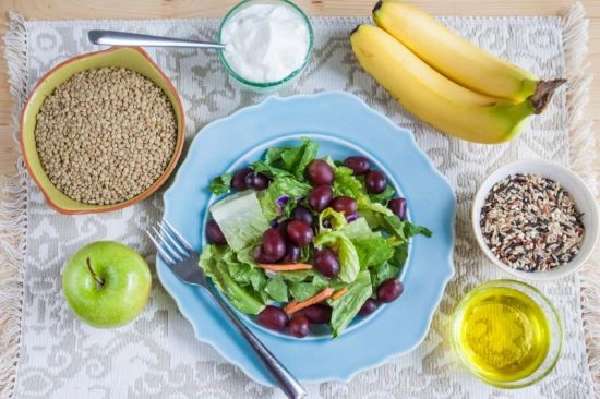
You can use folk remedies only without exacerbation of the pathology
Any addition to treatment, whether taking decoctions or introducing a product, must be agreed with the attending physician, since even a slight expansion of the diet during the acute period can lead to a worsening of the condition. In addition, the doctor, when making a recommendation, will take into account concomitant diseases.
Normalization of organ functioning
There are many ways to improve the functioning of this organ. To do this, you can include various porridges in your diet, buckwheat and oatmeal are especially useful. To improve the functioning of the pancreas, it is worth using an effective method. To do this, you need to add 2 cups of kefir to a glass of buckwheat and leave to infuse for 5-10 hours. The resulting composition should be divided into several doses: one part should be eaten in the morning on an empty stomach, the second before bedtime.
In order not to create additional stress on the digestive system, meals should be fractional. This means that you need to eat quite often, but little by little. In order for the pancreas to function normally, you need to consume various jelly. It is especially useful to prepare this drink from sprouted oats. To ensure the proper functioning of this organ, the diet should be based on vegetable soups and porridges cooked in water. It is recommended to adhere to this diet for several weeks. Sometimes this may take 1-2 months.
It will take quite a lot of time to get the pancreas to work normally. First of all, you need to switch to a diet that should exclude all foods harmful to the digestive process. If this does not help, you need to consult a doctor who will select the appropriate medications.
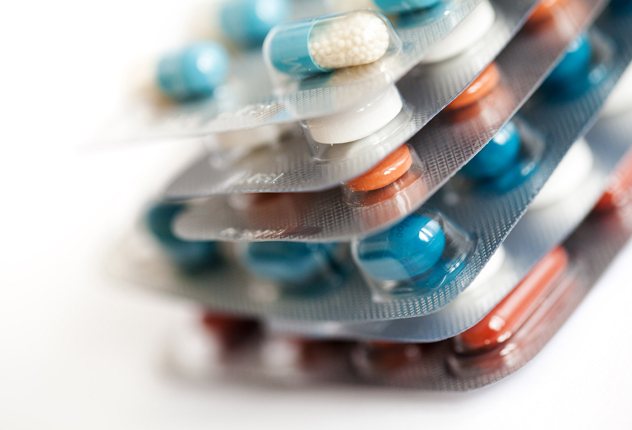
Medicines
Enzyme preparations should help the pancreas perform its functions. They restore the digestive process and thereby relieve the load on the gland, fewer pancreatic enzymes are synthesized and inflammation decreases.
Many drugs have been developed, but they are all similar in composition. The active ingredient in them is pancreatin, which is an extract of the pancreas and contains large quantities of components (lipase, amylase, protease) that break down nutrients. The doctor may prescribe:
- Creon;
- Mezim forte;
- Panzinorm;
- Festal;
- Pancreatin.
When the disease worsens, medications are prescribed that help reduce the synthesis of hydrochloric acid. Increased acidity of gastric juice increases the symptoms of the disease, can lead to inflammatory processes in the duodenum and aggravate the condition of the pancreas.
To normalize acidity, the doctor prescribes antacids. As a rule, they are recommended only during an exacerbation of the disease, but if gastritis is detected in addition to pancreatitis, long-term therapy may be required. Antacid medications include:
- Omez;
- Getrokalm;
- Zantac;
- Acidex;
- Acylok.
Antisecretory agents are indicated for disorders of the secretory function of stomach cells. Without their use, it will not be possible to normalize the functioning of the pancreas. This group of drugs includes proton pump inhibitors, H2-histamine blockers, M-anticholinergics. Unlike antacids, they act on the cells that secrete hydrochloric acid, rather than neutralizing the acid in the stomach juice.
Antisecretory agents include:
- Omeprozole;
- Pantoprazole;
- Rabeprazole;
- Ranitidine;
- Nizatidine;
- Esomeprazole.
The effect of the drug lasts throughout the day.
The following analgesics can be prescribed to relieve pain:
- Papaverine;
- Buscopan;
- Meteospasmil;
- Baralgin;
- Movalis;
- Voltaren;
- Indomethacin;
- Acetamifene;
- Mebeverine.
Symptomatic therapy may also be prescribed to help cope with diarrhea, vomiting, and fever. If inflammation is caused by an infectious agent, then antibacterial drugs are prescribed. Drug treatment must be recommended by the attending physician; you cannot decide on your own to take this or that medication.

In a patient with pancreatitis, pancreatic function improves within 3–12 months
Herbal infusions
The most popular treatment for pancreatic pathologies using home remedies is herbal medicine. In order to reduce the intensity of pain, Japanese Sophora is used. You can prepare it in the following way: place 30 mg of pre-crushed fruits of the plant in a thermos and pour 250 ml of boiling water, leave the mixture to steep until the morning. Then the herbal remedy should be filtered and consumed three times a day before meals, 30 ml. To achieve a noticeable effect, the duration of therapy should be at least two to three weeks, and if necessary, longer. After a week's break, the course can be repeated.
Treatment of the pancreas at home most often includes multi-component herbal preparations. The following herbal ingredients are mainly used:
- fennel fruits,
- rose hip,
- peppermint,
- immortelle,
- yarrow,
- corn silk,
- St. John's wort,
- valerian root.
To prepare the product, pour 30 ml of herbal mixture into 250 ml of boiling water and leave in a thermos for 12 hours. The finished drink should be divided into three equal parts and taken one dose before meals. The full course of therapy should be at least four weeks.
